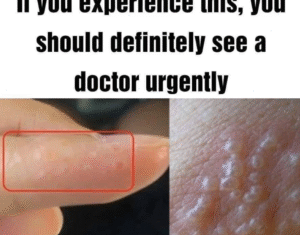Persistent Itchy Blisters on Your Hands or Feet? Here’s What to Know About Dyshidrotic Eczema

Dyshidrotic eczema is a skin condition that often appears on the hands and feet, usually showing up as clusters of small, itchy blisters. These flare-ups are especially common in the spring and can cause redness, irritation, and even cracked skin. Although there isn’t a permanent cure, the condition can be managed effectively with the right care and treatment. Importantly, dyshidrotic eczema is not contagious — instead, it’s commonly associated with factors such as allergies, high stress, or a family history of eczema or related skin conditions.
Recognizing the Symptoms
People who experience dyshidrotic eczema typically notice tiny fluid-filled blisters on the sides of their fingers, palms, or soles of the feet. These blisters can be very itchy and uncomfortable, sometimes leading to peeling or flaking skin as they heal. Those with a history of atopic eczema, hay fever, or contact dermatitis may be more likely to develop this condition. If left untreated, the blisters can occasionally become infected, which is why early recognition and proper care are so important.
Treatment Approaches
Managing flare-ups often involves topical treatments prescribed by a healthcare provider. Corticosteroid creams, antihistamines, or non-steroid ointments like Protopic or Elidel are commonly recommended. For more severe or stubborn cases, doctors may suggest phototherapy (controlled UV light therapy) or carefully draining larger blisters under medical supervision. It’s always best to seek medical advice for an accurate diagnosis and tailored treatment plan.

Helpful Home Care
Alongside professional treatment, simple at-home strategies can ease discomfort. Cold compresses, soothing gels like aloe vera, or oatmeal-based remedies may help reduce itching. Keeping the skin clean, moisturized, and protected from irritants such as harsh soaps or chemicals can also lessen the severity of flare-ups.
The Bottom Line
While dyshidrotic eczema can be frustrating, consistent care makes a big difference. By combining medical treatment with gentle self-care practices, most people can manage symptoms effectively and keep their skin healthier over time.